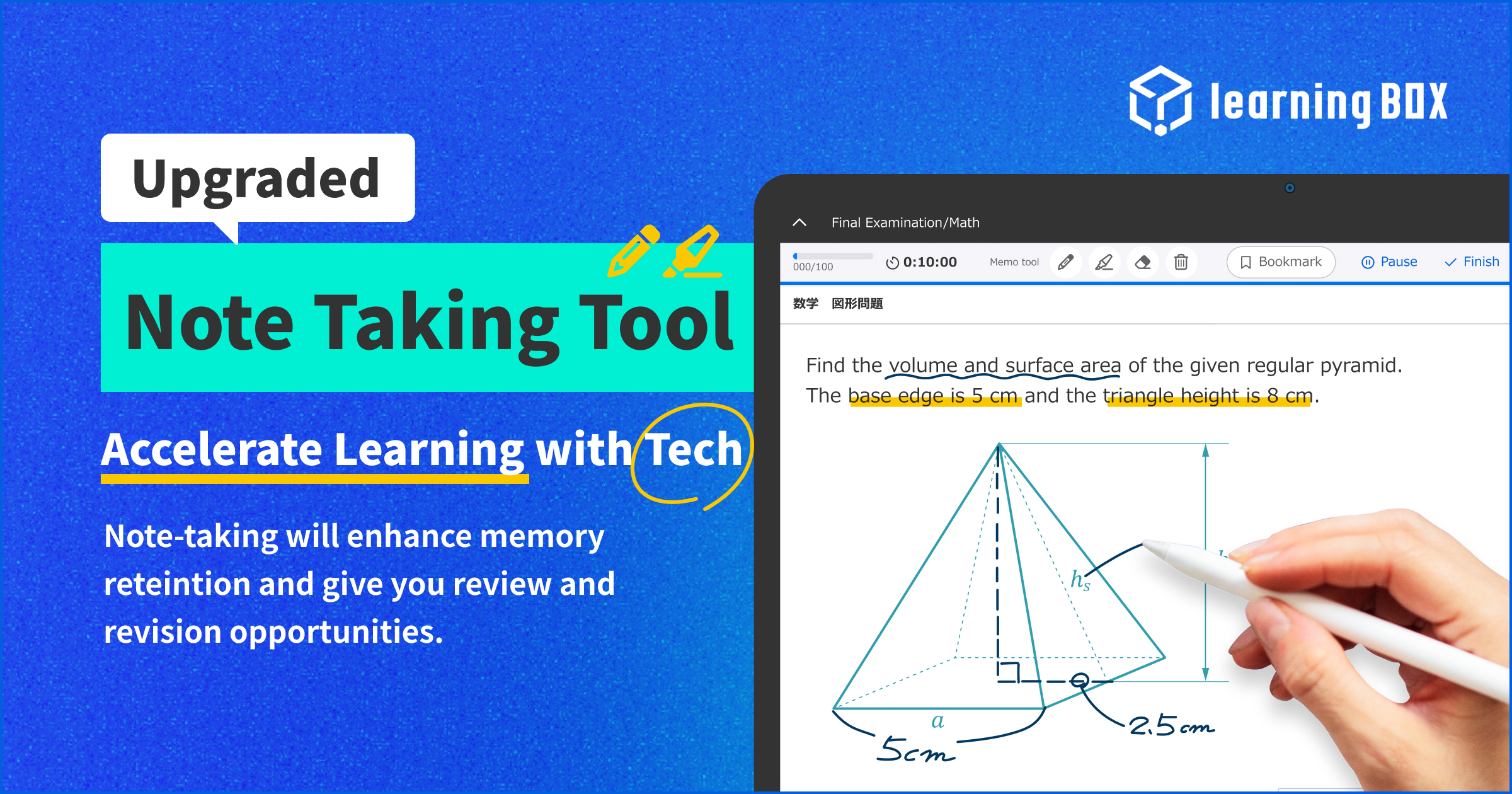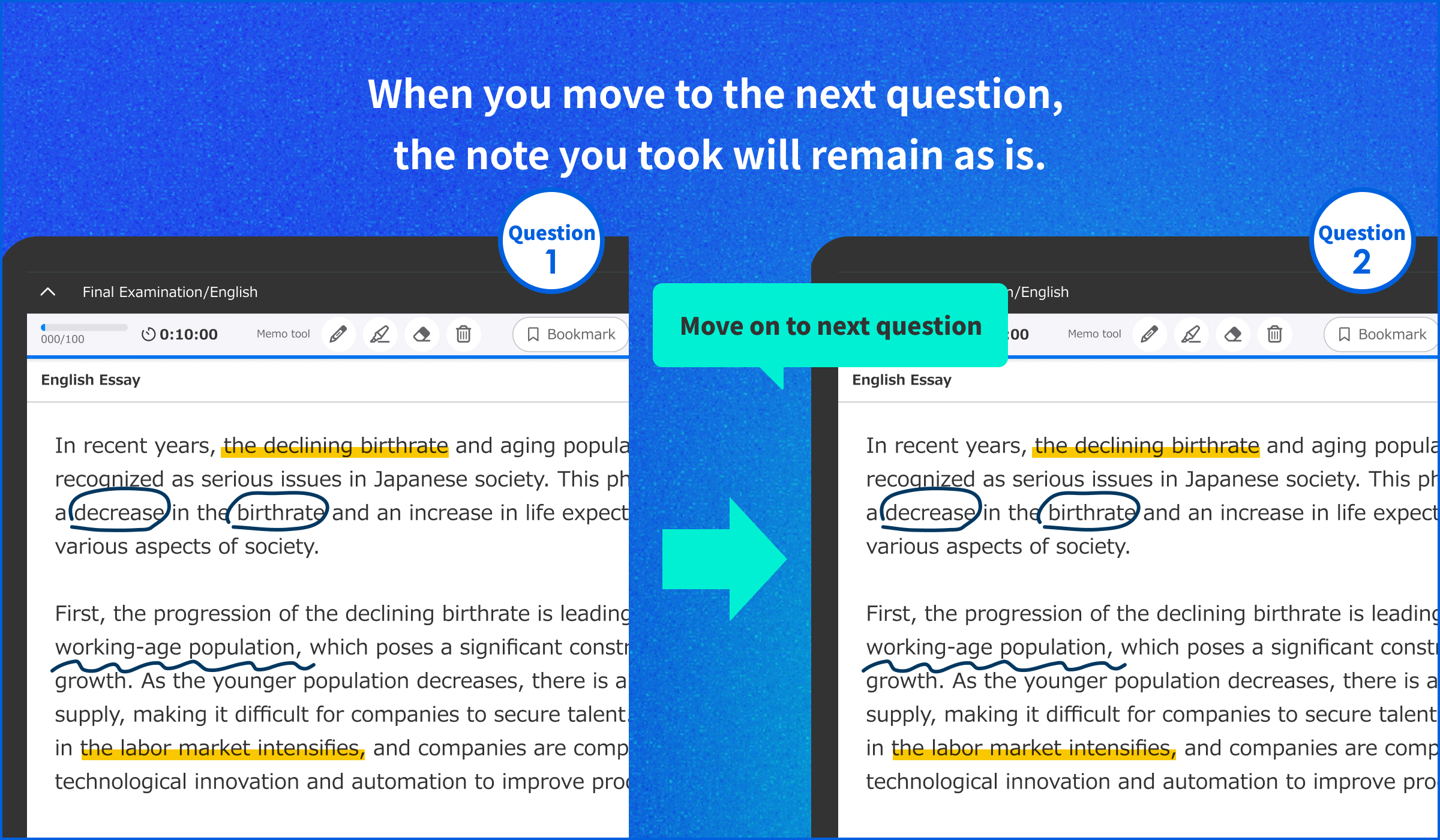
Reduced operating costs by freeing learners from paper and pencil, and streamlining the learning and testing experience for learners
learningBOX Corporation will expand the handwriting function in its e-learning system "learningBOX" at the end of September 2024 (scheduled). This function was developed in line with the "NEXT GIGA," the second phase of the GIGA school concept promoted by the Ministry of Education, Culture, Sports, Science and Technology, and is intended to promote digitization in the educational field. It is also expected to be used in correspondence high schools that adopt the IBT/CBT method of examination, for which demand has been rapidly increasing in recent years.
GIGA terminals penetrated, but less than 30% "used terminals almost every day" Far education digitalization
According to the 2023 National Survey of Academic Performance and Learning by the Ministry of Education, Culture, Sports, Science and Technology, only 29.5% of elementary school students and 25.7% of junior high school students answered that they "used a terminal almost every day" in situations where teachers and students communicate with each other (*1). This reveals that even with the widespread use of GIGA terminals, the reality is that paper and writing materials are still used on a daily basis in learning situations.
IBT and CBT are increasingly being used, but note paper and pencils provided Conventional operational costs and labor are an issue.
Since the Corona Disaster, the digitization of examinations (IBT/CBT *2) has also attracted attention. However, the reality is that correspondence high schools that use IBT/CBT have yet to fully digitalize their examinations. For example, conventional measures are still required, such as the distribution of paper and pencils for taking notes during the examinations and handling students who forget their pencils, and there are concerns about the operational costs and time and effort involved.
(*2) IBT/CBT
IBT stands for "Internet Based Testing," a testing method in which examinees take the test using their own computers, while CBT stands for "Computer Based Testing," a method in which examinees go to the testing site and take the test using a computer installed there.
Handwriting functionality for a user-friendly learning environment for both learners and operators
In response to the comments from many users that the cost of distributing paper and dealing with those who have forgotten their pencils, etc., and the fact that operations have not been digitized despite CBT, we have decided to develop a handwriting function in the version upgrade scheduled to be implemented at the end of September, 2024. We have decided to develop a handwriting function in the version upgrade scheduled to be implemented at the end of September 2024.
This will not only improve the user experience, but also reduce traditional costs such as paper distribution and pencil preparation, allowing for a smoother, more digital pilot operation.
handwriting capability

Online quizzes and mid-term and final exams will allow students to write mid-term calculations in arithmetic and highlight the text of Japanese questions. This allows students to visualize their own thinking process and to derive answers as smoothly as they would on a paper-based test.
Continuous display of memo content across questions

When multiple questions are asked in the same passage, such as Japanese or English long-answer questions, the notes will be continuously displayed across questions. This allows the learner to focus on the question at hand without having to go back to the previous question to check his or her notes. In addition, the user can scroll through long passages of text, keeping the same section of the text as he or she reads it.
Reuse of notes when study is interrupted and resumed
This function allows you to reuse your previous notes when you resume your study after interruption. You do not need to write new notes each time you resume your study, and you can work in the same state as before the interruption.
It is expected to be especially useful in environments that require flexible study schedules, such as correspondence high schools.
This new feature helps smooth the transition from traditional paper-based testing to digital testing by retaining the familiarity of handwriting while taking advantage of the benefits of digital technology. It meets the needs of the educational field and provides an easy-to-use environment for both learners and operators.
Related Release
AI Prevents Impersonation and Cheating
Leveraging Learning Data for Students Success, DX in Education
Upcoming releases
Our company's mission is "to create a future where anyone in the world can learn freely, anytime, anywhere." We plan to add various functions in the future to support and streamline a wide range of school education operations.
Our product policy is to "face our customers' voices straight and walk with them," and we will continue to develop necessary functions such as issuing digital badges and rubric evaluation by ChatGPT.
We will continue to contribute to the digitization and quality improvement of education in Japan by listening to the voices of the education field and developing constructive functions.